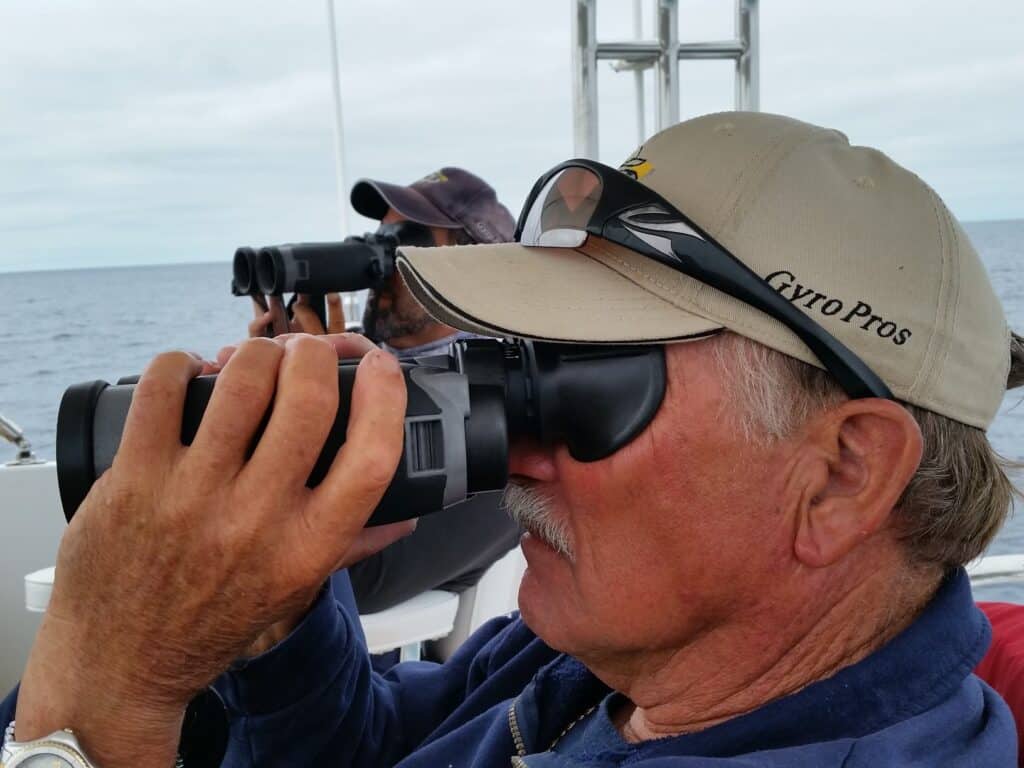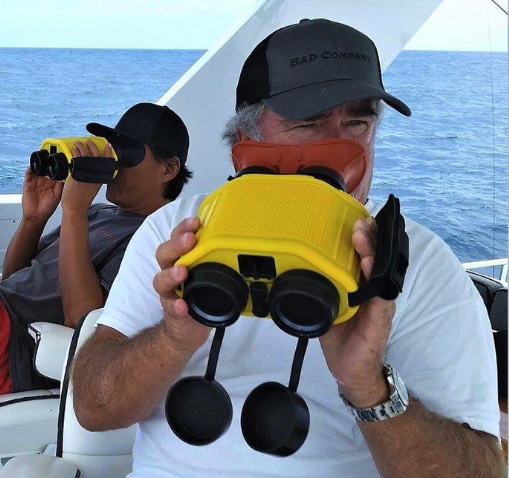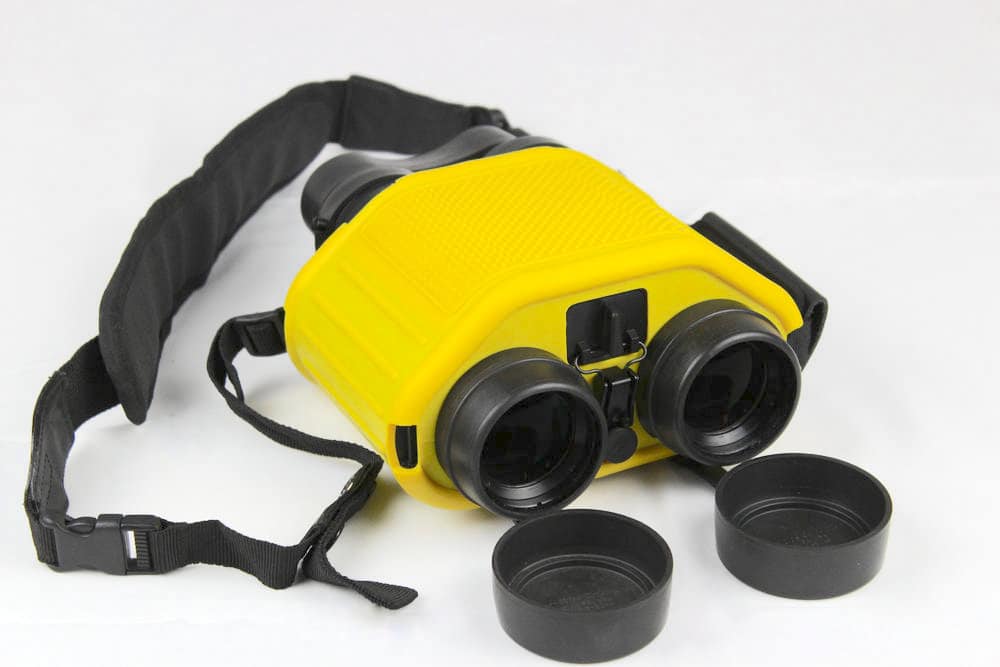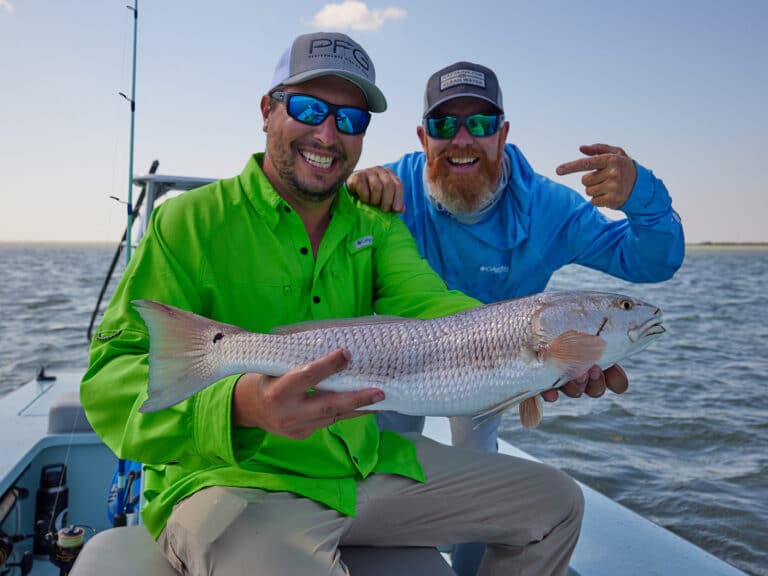
Advanced technology creates two conundrums. For one, high-tech carries a high price. Secondly, after experiencing the benefits of technology, you can’t imagine life without it.
Both axioms hold true when it comes to handheld gyroscopic-stabilized binoculars for fishing, says Jimmy Kingsmill, a veteran angler from California who, along with a handful of other angling legends, pioneered the use of these optics three decades ago.
Today, Kingsmill fishes around the world and is the distributor of one of the most popular brands of gyro-binos—Fraser Optics. Fraser’s S250 14×41 gyro-binos retail for $4,995.95, while its M25E 14×40 gyro-binos retail for $3,600. The other leading brand in this field is Fujinon, and its Stabiscope 12×40 gyro-binos sell for around $5,000, while the 16×40 version retails for about $5,500.
Are They Worth It?
“Once have them, you can’t do without them,” Kingsmill says. “I can see a frigate bird or a single jumping spinner dolphin (a sign of tuna in the tropics of Pacific) up to 8 miles away.” Derived from military technology, the key to these optic systems is the battery-powered gyro-stabilization system that prevents the image from bouncing about in bumpy seas. The handmade Fraser gyro, for example, spins a brass ring at 1,200 RPM to hold the binos steady, which in turn allows for greater image magnification.
Most conventional marine binos max out at 7 times (7x) magnification, because anything greater becomes too jittery to be useful in rough seas. But the stability of gyro-binos allow for doubling that number, boosting the magnification to 14x or even 16x.
Marlin Magic

Gyros first made their mark in the Southern California marlin tournament scene, where the fishing technique often calls for finding the slender upper lobe of a striped marlin tail as the fish swims at the surface. Anglers search intently with binos, and once a marlin is located, they closed the distance and cast live baits such as mackerel to the fish.
Gyro-binos changed the game, allowing anglers to find even the faintest trace of a tailing marlin at previously unheard-of distances—up to 3 miles away. Today, as a result, in order to be competitive, every team entered in a marlin tournament from Southern California to Cabo San Lucas has at least one pair of gyro-binos on board.
Gyro Pilots
Many boats have multiple gyros with one or more crew members—Kingsmill calls them “gyro pilots”—dedicated to scouting the waters for the tails of striped marlin. Gyro pilots are often perched in the flying bridge or tuna tower to extend their view over the horizon even farther. They use bean bag chairs and pillows to recline, brace themselves, support their arms and forestall fatigue while holding the gyros to their eyes during long hours of searching.
Even after gyro pilots locate signs of fish, they keep fixed on the target through the optics, verbally updating the position and distance to the fish as the helmsman drives the boat in response to commands such as, “2 o’clock, one mile.”
Wide Application

Today, the utility of gyro-binos extends well beyond striped marlin fishing. Increasingly, anglers are using this technology to find birds such as frigates, terns, shearwaters and gannets; scout for weedlines, kelp paddies and other floating objects that attract offshore fish; find flagging swordfish; and search for schools of breaking fish such as tuna.
The technology is also spreading beyond the West Coast, says Kingsmill. “Captains and boat crew who venture to fish the Pacific coasts Costa Rica and Panama have witnessed the effectiveness of gyro pilots in finding fish,” he explains. “These anglers then often bring that experience back to places like Florida, Gulf Coast or the Northeast, and start using gyros in their home waters.”
“When using the binos, the best technique is to search with the sun at your back and in a following sea,” says Capt. Barry Brightenburg, who uses Frasers extensively while fishing offshore in waters off Southern California for species such as bluefin tuna and mahi. “Also, if there are other boats in the area, drive away from that area and head out to find fish by yourself far away for the crowd.
“I like to eliminate any visual obstructions on the bow such rods in vertical rod holders,” Brightenburg adds. “Ultimately, I could not do my job without the gyros”
Gyroscopic-stabilized binoculars combined with the dedication to continually keep the optics to your eyes for hours on end can help you catch more offshore fish than those without this technology. And in that is your goal, gyro-binos are definitely worth the price.









